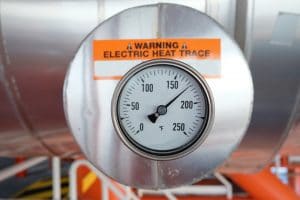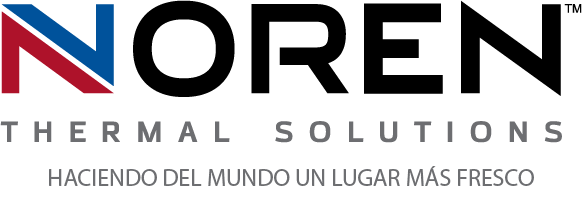 Over the decades that heat exchangers have helped transformed industrial thermal management, companies in nearly every industry have begun to rethink their approaches to electrical cooling. For most modern applications, the chilled air that more traditional solutions utilized is no longer necessary. The more innovative methods of transferring heat that heat exchangers utilize, and the ambient cooling that results from it, have proven more than sufficient. However, in some applications, efficient thermal management can still require below-ambient cooling, though fortunately, companies don’t have to rely on older, more cumbersome cooling methods to achieve it.
Over the decades that heat exchangers have helped transformed industrial thermal management, companies in nearly every industry have begun to rethink their approaches to electrical cooling. For most modern applications, the chilled air that more traditional solutions utilized is no longer necessary. The more innovative methods of transferring heat that heat exchangers utilize, and the ambient cooling that results from it, have proven more than sufficient. However, in some applications, efficient thermal management can still require below-ambient cooling, though fortunately, companies don’t have to rely on older, more cumbersome cooling methods to achieve it.
When ambient cooling is insufficient
The process of ambient cooling describes maintaining the temperature within an electrical enclosure at just above the ambient temperature outside of it. This is in stark contrast to more traditional methods, such as air conditioning and air compression, which rely solely on the generation and circulation of chilled air. By simply transferring electrical waste heat and dissipating it before it can accumulate, heat exchangers prevent the temperature inside of an enclosure from rising. For some applications, however, the maximum operating temperature is below that of the ambient temperature outside of the enclosures. In such applications, effective thermal management can only be achieved when the temperature within the application’s enclosures are kept well below the ambient temperature outside of them.
Why below-ambient cooling is more challenging
While ambient cooling methods are effective for many applications, those that require below-ambient cooling can be more complex. Many companies that utilize applications where ambient cooling is insufficient may still rely on older air conditioning or air compression technologies to achieve the below-ambient cooling temperatures they require. This can make their efforts at creating more eco-friendly processes more challenging, as well. The processes required to create chilled air consistently and circulate it throughout multiple electrical enclosures can require large amounts of energy and complicated machinery that’s prone to malfunction. Fortunately, companies don’t need to rely on such solutions, as many heat exchangers can be specially designed to achieve below-ambient cooling with optimal efficiency and minimal energy usage.
Making below-ambient cooling more eco-friendly
There are several aspects of below-ambient electrical cooling that make it more challenging to streamline and make eco-friendly than ambient heat exchangers. For instance, the effectiveness of ambient cooling for many applications contributed largely to the success of early heat exchangers. However, achieving below-ambient cooling requires more than just rapidly removing waste heat as soon as it’s produced. For more traditional solutions, it can be achieved by consistently generating and circulating chilled air. Within an heat exchanger, it can be achieved by special design and the use of a properly chilled, eco-friendly cooling fluid.
For more information about making below-ambient cooling more eco-friendly, call Noren Thermal Solutions in Taylor, TX, at 866-936-6736.







